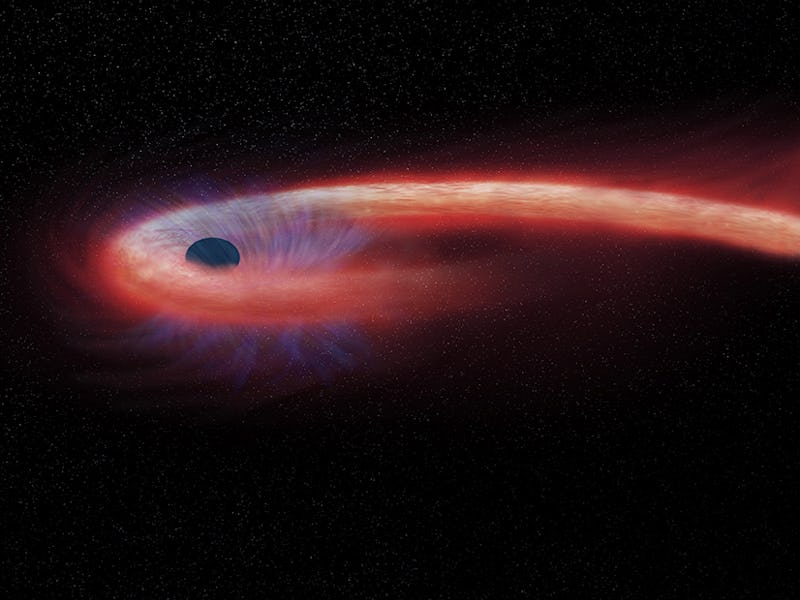This Ravenous Black Hole Broke a Star-Devouring Record

The star was in for a grotesque fate when it wandered near a black hole. And it didn’t end quickly — not when the black hole mangled and gnashed it into bits. For the next decade, the hole slowly devoured the wrecked star’s remains.
In a study published in Nature Astronomy on Monday, researchers found that the slow death of this star is more than ten times longer than any other observed death of a star by a black hole. This record-breaking stellar feast means one of two things: Either that this was the largest star ever observed to be destroyed by a black hole, or this is the first time a smaller star was completely ripped apart.
“At the center of the galaxies, the density of stars is also high so that some stars might be too unlucky and wander too close to a supermassive black hole,” Dacheng Lin from the University of New Hampshire in Durham, New Hampshire, who led the study, tells Inverse. “The gravity around the supermassive black hole is extremely intense.”
Using three orbiting X-ray telescopes, scientists found evidence for a “tidal disruption event,” or when tidal forces from the intense gravity of a black hole can destroy an object. Like Spirited Away’s No-Face swelling up as it devoured enormous amounts of food, supermassive black holes also grow rapidly from tidal disruption events and gobbling up stars.
An X-ray image depicts XJ1500+0154, a black hole about 1.8 billion light years away.
This ravenous, supermassive black hole, known as XJ1500+0154, is located at the center of a small galaxy about 1.8 billion light-years away. When the star encountered the black hole, some of its debris was hurled outwards at high speeds. But unfortunately for the rest of the star, it plunged into the black hole’s depths, heating up to millions of degrees and emitting an X-ray flare.
“We will continue to observe it and check how it evolves,” Lin says. “This is the first time we see such a prolonged event and we are eager to see how it behaves in the long term.
If the black hole is still hungry, it’s out of luck — for now. Researchers predict that this monster’s feeding supply will decrease over the next decade.
“As the black hole has eaten more and more mass of the star, the supply will decrease,” Lin says.
Thank the space gods we live in a galaxy far, far away from this beast.